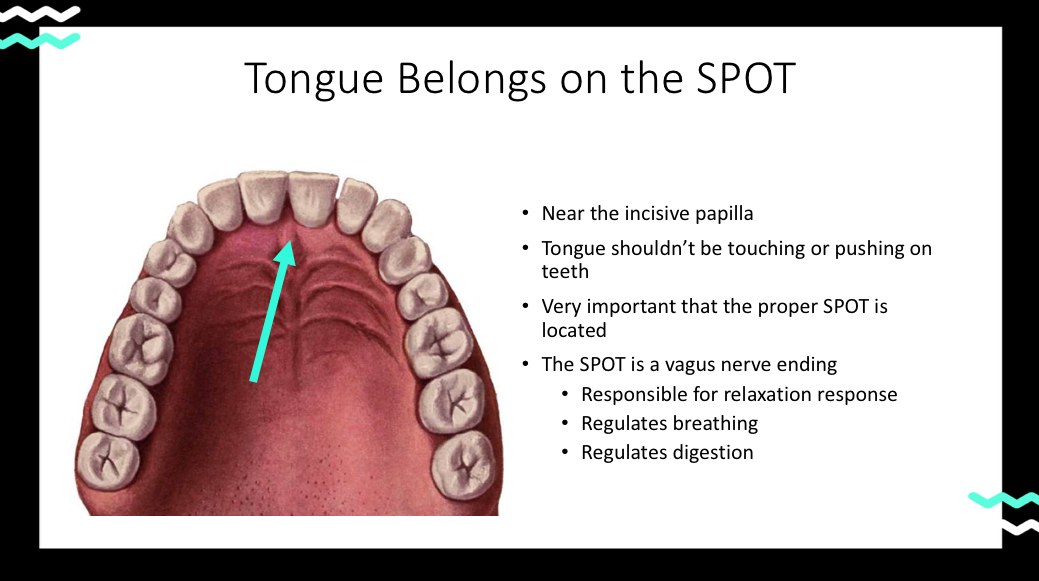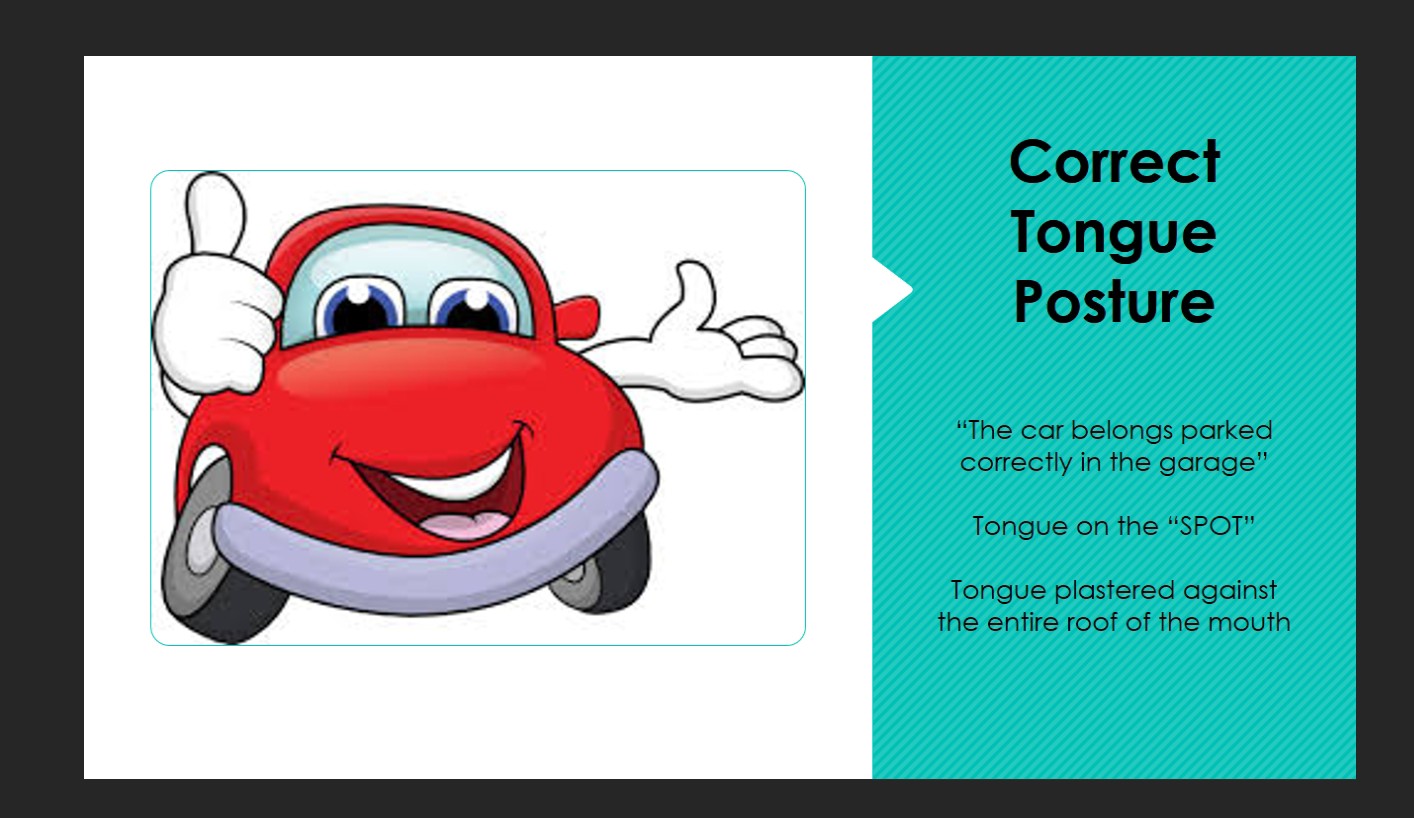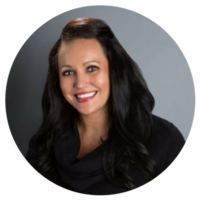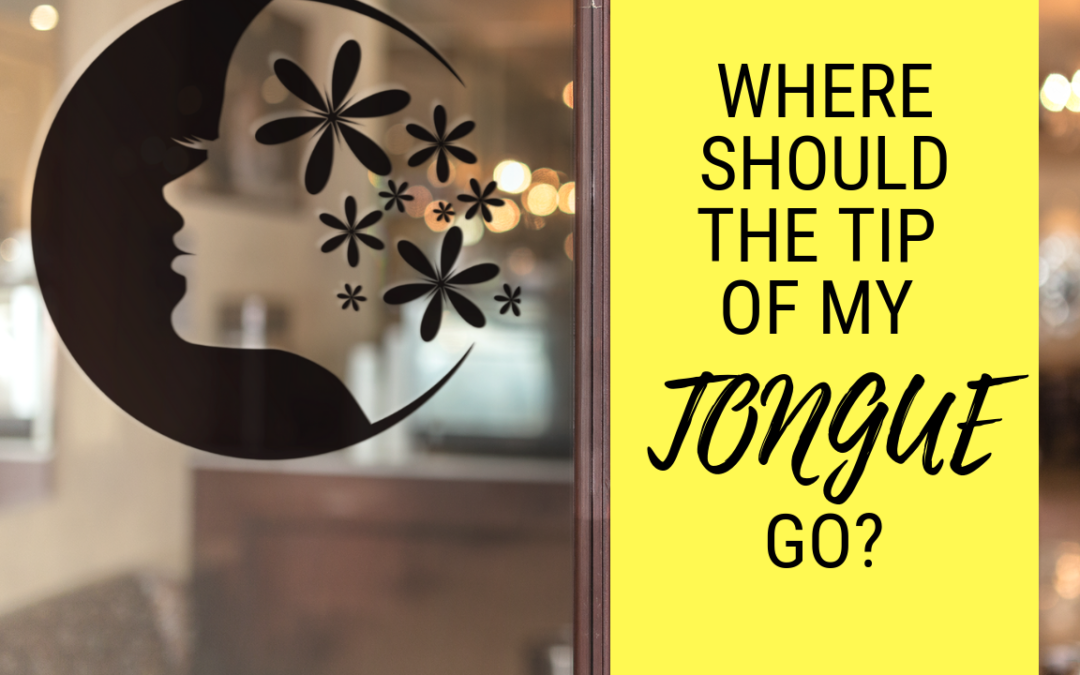Why Tongue On the Spot Matters
One of the 4 goals of myofunctional therapy is that the tongue is on the spot. That position is considered correct tongue posture. In the big, myofunctional picture, I want your tongue fully living “tip to tail” in the roof of your mouth. I know it seems like a long shot, especially when you can’t do it now, but it is one of the things that we work on when you’re in myofunctional therapy with me.
The spot is a great place to park your tongue to facilitate getting the whole body of the tongue up. Now really, its more like the front third of the tongue and the front third of the palate, but we learn it as tongue on the spot for a few reasons. One of which is the vagus nerve ending.
If you’ve never heard of the vagus nerve, I encourage you to do some googling on it. The vagus nerve is the longest cranial nerve in the body. It is involved in the regulation of all major bodily functions, including breathing, digestion and relaxation. When the tongue is low, this vagal nerve ending is never stimulated. Have you ever watched a toddler suck her thumb? Where do you suppose that this thumb is pressing? Yep, normally the pad of the thumb is pressing right on the “spot”. This is calming to the child.
The slide below is taken from a module of my Myo Mastery Program. It does a great job of showing you where the spot is located.

How I Teach Tongue On the Spot
One of the first things that I teach my clients is “tongue on the spot”. The tip of the tongue should be on or near the incisive papilla behind your maxillary central incisors. Ok…now in English! Do you feel that “speed bump” behind the top, front teeth? That is the incisive papilla. This is a great landmark for the “spot”. However, I have my clients back the tongue up just a bit if the tongue is pressing up against the teeth too much.
Once I have taught my client how to find the spot, then one of the first exercises that I teach is the “Spot Rub”. With this exercise you are just rubbing the heck out of the spot with the tip of the tongue. (I call it the “pizza burn” or the “coffee burn” spot. I don’t know about you, but I’m pretty sure this is the same location that I always burn with pizza or coffee. Sigh…..)
Rubbing this spot starts to wake up that nerve ending and also teaches your tongue where to go. Now, this doesn’t happen overnight, and many of my clients have to work really hard to build the awareness, but with smartphones these days, there are so many apps that make awareness building easy. Many of my clients find a timer app of some sort that gently reminds them every 30 or 60 minutes to “tune in” and see where their tongue is.

What Does it Mean if My Tongue Isn’t On the Spot?
If your tongue is not on the spot, then it means that you have a low, resting tongue posture. A low tongue posture can be detrimental for a number of reasons. First, when the tongue is low it causes mouth breathing. Mouth breathing creates many concerns, some of which you can explore here.
Second, when the tongue is low, it isn’t in the roof of the mouth doing its job of “nature’s palatal expander”. The tongue is used to expand the upper arch, which in turn helps guide the shape of the lower arch. So, you can see how this works. The maxilla is like the lid on a box. If the upper arch gets a nice, wide “U” shape then the mandible will follow suit. If the tongue is low, then the craniofacial growth can be affected.
What Can I Do to Correct My Tongue Posture?
Awareness is key, and it’s half the battle. But the other half of the battle is training the tongue to automatically go to the roof of the mouth. That training is accomplished through adequate myofunctional therapy. Thinking about it isn’t enough, but you must get the tongue and the oral structures strong enough to help build the habit.
What If I Want to Learn More?
The best place to start is by booking your exam and downloading the Getting Started Guide.

About Carmen
Carmen found her path of passion years ago as a dental hygienist. After a stint in graduate school to earn her M.B.A., she left clinical hygiene practice to start her business, Integrative Myofunctional Therapy. In addition to seeing clients in her private online practice, she also teaches the craft of myofunctional therapy in her Myo Mastery Program, coaches dental offices on how to implement myofunctional screening into the daily practice, and speaks frequently in various settings.


